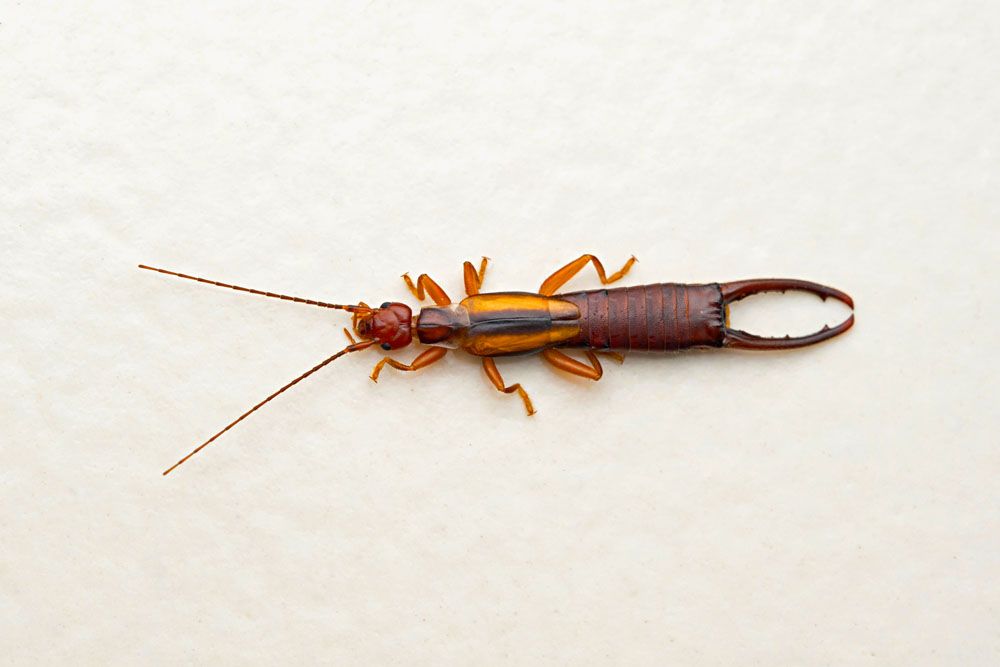
Earwigs – Forficulidae – Labiduridae
Earwigs
Order: Dermaptera (Families: Labiduridae, Forficulidae)
Common Name: Earwigs, Pincher bugs, European earwigs, Striped earwigs, Spine-tailed earwigs. (Earwig is a general common name. Other names are based on individual species)
Appearance: Earwigs belong to the order Dermaptera and have further suborders and families. Generally, earwigs are 5-50 mm long insects having a pair of characteristic appendages that look like forceps at the end of the abdomen called cerci. They use cerci in their defense and get curved over them like a scorpion during an alarming situation. They are reddish-brown and have short wings under a hard wing cover. Some species are wingless.
Host Plants or Food: Earwigs prey on plant pests such as Aphids, Mites, etc. Some species also feed on organic matter and least on the plant, which is almost of no concern.
Territory: Throughout America, Europe, and Asia.
Mode of Damage: Beneficial Garden Insect. They prey on plant pests and seldom damage plants causing no economic loss.
Habits and Life History:
Earwigs don’t like heat and dryness, so they usually live in cool and dark places during the day and come out at night.
They mostly hide themselves under debris, leaves, rocks, and tree bark.
Female earwigs lay eggs in winter into the funnel they dig in the ground. They lay 30 or more eggs. Eggs of earwigs are white or cream-colored and oval-shaped. Just before hatching, eggs become brown and kidney-shaped.
Eggs hatch into nymphs that are light brown and remain there in eggs till first molting and fed by their mother.
The second instar may come out during the night, feed, and return back to the nest during the day. Later, instars feed freely on their own. They undergo almost 4-6 moltings before maturing into an adult.
They have only one generation per year.
